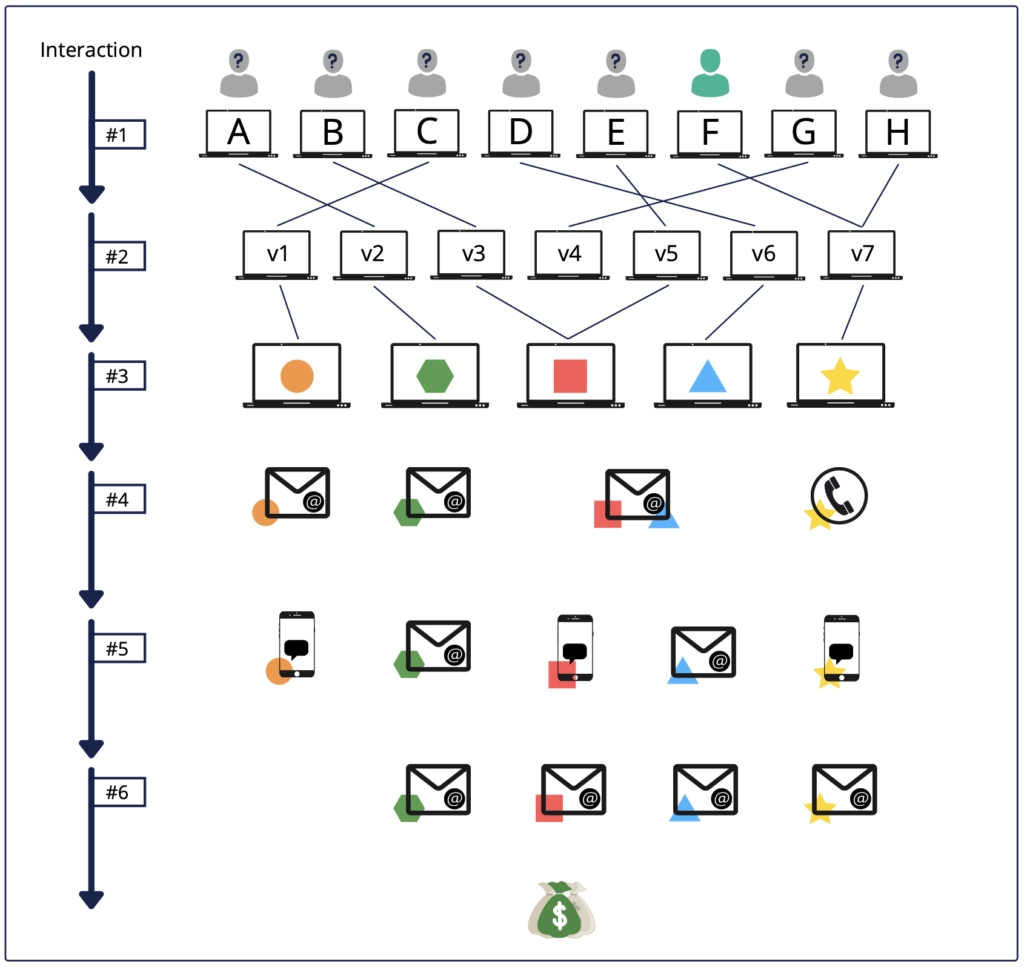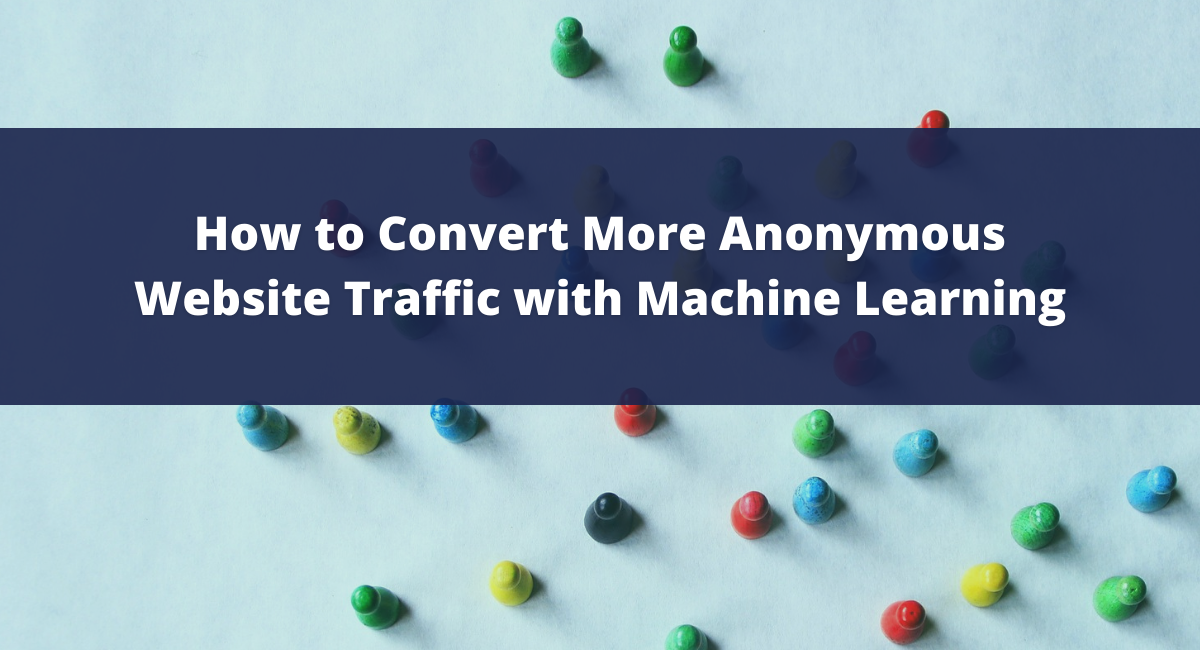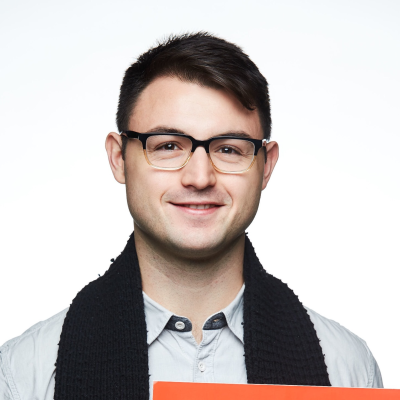Too expensive and valuable to waste
You probably don’t need anyone to tell you that your website traffic is expensive. Between investing resources across paid ads, direct mail, 3rd party channels, email and campaign management, content building and SEO, or any other source, the cost of that traffic grows quickly and can easily consume your advertising budget.
Perhaps more importantly, those site visitors are super valuable to your business – too valuable and too expensive to let slip away!
While you have that precious attention from prospective customers, you have limited time to give them a taste of your brand, your offerings, and what your customer experience is all about. That fleeting and fragile time period must be handled well.
How do you best handle those important moments when the site visitor first reaches your site and starts their browse?
Of course it starts with your homepage and landing pages. They must be effective, and then iteratively optimized. And beyond, you’ll consistently need to determine the right paths, flows, and offers to convert that traffic into your buying funnel. It’s a full-time job (or 10 full-time jobs within a huge operation)!
That much might be obvious, so let’s move on to how your team can identify the website audience segments that have the most room for improvement – and then look at ways to take action!
Website Traffic Breakdown: Anonymous vs. Known Site Visitors
Website traffic can be broken down into a handful of groups, starting with two basic categories:
Known users.
- In short, you have this person’s email address or phone number stored – typically with their name and some other details. These are leads, sign-ups, previous purchases, or lost deals that showed interest at some point. Typically these will live in your CRM and are uniquely identifiable.
Anonymous users.
- This is everybody else. You don’t know who they are when they land on your website. It could be their very first visit to your site, or they could have visited yesterday and the prior two days – but they are still anonymous to you and your systems. Once they provide you with contact information, they become known – but until that point, we call them anonymous.
Within this breakdown, your website – like most online sellers’ sites – probably has no more than 10% of traffic as known users. This will depend on where and how much you advertise, how you promote your listings, and other factors.
That means 9 out of 10 of the visits you get to your website are anonymous, with no email address, no previous purchases, and little to no data about them.
It’s a big number… the vast majority of your hard-earned traffic.
Anonymous traffic converts
Now, that ~90% of your website traffic whom you don’t know still has an average conversion rate into lead form or a purchase. For your site, that anonymous visitor conversion rate may tell an interesting story. Calculating that rate is instructive to understand what sort of untapped opportunity this audience segment represents.
You can generate a basic understanding of the conversion rate by looking at your total purchases and subtracting out those that are repeat customers – from known users. Comparing this with your website traffic, you’ll be able to get a basic understanding of the conversion rate for anonymous traffic. If you have certain goals & events setup in your web analytics platform (like Google Analytics), this can help you look from the top down to get a rate of how many prospective customers become a lead or actually make a purchase.
The potential here is quite large – as the audience segment is most of your traffic and relatively untapped. But let’s look at an example to add some color.
Let’s say you get 10,000 website visitors per month and currently turn 5% of that into revenue: 500 conversions. Imagine if you were able to drive that up by 0.5 or 1.5 or even 3%? If your average purchase value is $1,000, an increase of just 0.5% is adding 50 transactions and $50,000 in revenue. This is high impact.
And further, let’s say another 5% of your traffic doesn’t convert into conversions, but they do fill out a form of some kind and provide their email address or phone number. A percentage of those new leads will convert into customers over time. So just increasing the number of new leads from that anonymous traffic ultimately has a big impact on your revenue as well. And it’s easier to get a lead’s email address than to get the customer to commit to purchase up front!

It’s helpful to think about this to get a clearer picture of the size of the drop-off and thus the size of the opportunity! Clearly putting effort towards capitalizing on anonymous traffic to turn more of those unknown people into known prospects and customers is a high-leverage strategy.
Learning about your anonymous users
While it may appear that you have no data about these anonymous website visitors, there is actually a fair-sized bucket of information you are able to work with.
Web analytics platforms like Google Analytics will pick up some helpful information as soon as a user lands on your website. It captures and stores data from each website visit like the following:
- Date, day, and time of visit
- Referring site URL
- Geography and network location
- Web browser type
- Device type and operating system
- Campaign and other source information (UTM parameters)
- Dozens of other technical attributes, such as Flash version, JavaScript support, screen resolution, etc.
In reality, Google Analytics captures literally hundreds of individual data points that are available.
So while you don’t know the person’s name & contact info, preferences, purchase history, and survey responses… you do immediately know all of the above information before the customer even sees your homepage.
Then once the user actually interacts with your site – scrolls, clicks, visits specific pages or content, applies filters and preferences, selects features, etc – all of that additional information can also be picked up by Google Analytics.
So before the initial landing page, you already have a pretty large bucket of data. But after some website browsing, you have multiple buckets of helpful info!
The question is: Does that information help at all to improve the conversion rate of anonymous traffic?
Yes, with the right technology. And we’ll look at how.
But first, how is data used on your website in general?
If you actually know who a website visitor is already – because they have made a purchase in the past – you have enormous power to personalize the experience for that user on your website.
Specifically: they can be logged into their account and be greeted by name. They can be shown recommendations to make repeat purchases, or a new purchase that is similar or complementary to their previous buying behavior. Imagine showing the actual image of their previous purchase above a set of kindred recommendations. In short, you can give them a personalized experience based on tangible learnings from the past.
You may be thinking: this seems both easy and hard. Easy? Because you know all of that customer data is in your various business systems, CRM, etc – and is usable. But hard because we have to ask: how do we actually use it? How do you tactically power those adapted website experiences? In short, there are tools that enable this type of automated website personalization.
With a little bit of setup, you can start teeing up very personalized experiences for your loyal, repeat customers. Even for leads who subscribed or created an account in order to save some selections for later: you can make it easy for them to pick back up where they left off and move forward with the purchasing process.
How does it work for anonymous site visitors?
All of the Google Analytics we data mentioned above was once collected for your customers back when they were anonymous. Plus every new customer that purchases today and tomorrow will also have that information captured, stored, and usable.
As a result, every known customer profile – along with their preferences, purchasing history, and other nuanced data – can be associated with different combinations of the Google Analytics information.
Using statistical models and machine learning, the relationship can be mapped between all of those anonymous attributes and their correlation with:
- similar customers,
- purchase preferences and affinity information,
- revenue and lifetime value,
- and many other desired goals.
Once those probabilities and correlations are calculated, it’s now possible to establish a relationship between many dozens of attributes from an anonymous website visitor and one of your known customers with very similar traits who made a purchase recently.
Using machine learning models, real-time data ingestion, and API integrations, those associations can be used to customize website page dynamically: providing an experience that is personalized to the specific anonymous user. And all this based on trends from their anonymized data.
Bonus: it’s not as hard to implement as it may sound.
Machine learning applications
Over the last decade, machine learning (ML) technology has been adopted across different industries, use cases, and business sizes. (In fact, typing out this exact sentence actually generated ML recommendations to auto-complete my words and phrases!)
Even further, CNBC reported that “91% of executives said that machine learning would be critically or very important to their companies in 2022”.
The technology itself is well validated and proven at this point, but now businesses are figuring out which use cases can benefit from building and deploying ML.
Dynamic, personalized landing pages on your website is one of the big opportunities. Taking a step back: ML enables you to tailor and continuously adapt content, recommendations, offers, and experiences to each individual… across your website and digital sales channels. The rationale behind this calculus is – put simply – that these individualized experiences convert customers significantly better than the alternative.
Letting machine learning run on your website to customize the user experience is a high leverage way to turn your hard-earned (and expensive!) web traffic into leads, form-fills, purchases, and loyal customers.
Taking a Look at Different Experiences for Different Website Visitors
Depending on what permutations of data is captured, each visitor will get personalized experiences for each impression and brand interaction – from website content and promotions, to lower-funnel touch points.
Starting with Interaction #1 – the initial webpage view on your site – and continuing through their website journey and booking experience on different pages, each visitor sees the most relevant recommendations and messaging. The same personalization can follow each person past their website experience and give them tailored content on emails, SMS, and any other touchpoint with your brand.

Dynamic experiences with ML
At Jarvis ML, we call this Dynamic Experiences. One anonymous visitor gets one experience, and the next visitor gets different recommendations, content, drop-down banners, or even a separate landing page entirely.
ML thrives in this environment because it isn’t explicitly programmed to follow rule-based logic; rather it’s given the data, analytical models, and infrastructure to make decisions on its own. And learn after every decision.
One user may have come from a specific ad – which has certain content, creative design, keyword, source, device, location, referring site, and so forth. ML can understand the probabilities of different behaviors (that would be impossible for humans to do), run calculations in real time, and adjust on the fly to create a continuously evolving decision engine.
The result is an automated, data-driven personalization engine that will engage and delight your customers. You’ll be able to capture in-the-moment signals to instantly match a prospect with their purchase trajectory; then use that to adapt web page components to that specific anonymous user: product listing pages, hero banners, promotions and recommendations, calls-to-actions, and more.
Turning “at-bats” into “on-base” and runs
We like to refer to a new website visitor as an at-bat: you have an opportunity to take that experience of being pitched a new prospect and turning that into a win for your team. Improving your “batting average” translates directly to getting more of your website visitors on-base and across the home plate.
Personalizing the experience for anonymous website visitors increases the conversion rate and the general effectiveness of your marketing funnel. You get fewer strike-outs and foul balls, and more singles, doubles, and home runs.
The takeaways
With expensive and high-value traffic coming to your web page every day, you have an incredible opportunity to grow your business without having to make enormous changes across your business.
The traffic is there: you’ve already earned it, paid for it, and captured some attention. Now you just need to put some optimization efforts in place to keep those customers engaged, show them what they’re likely to enjoy, and convert them down your funnel.
The opportunity to use technologies to get more out of your anonymous web traffic is here. Other sellers and service providers are deploying ML online to show the most relevant information to the right users at the right time to turn that 90%+ of their anonymous and expensive traffic into more revenue and more loyal, repeat customers. It’s one of the most low-hanging and high-leverage opportunities available today.
Jarvis ML guides companies on how to best utilize their business data to grow revenue and solve their most important challenges.
Our advanced machine learning organizes all of your purchase, product, customer, and marketing data to draw meaningful connections and power on-the-spot decision making. You’ll be equipped to personalize your customer journey; calculate the highest-converting prices and products; and grow revenue predictably.





